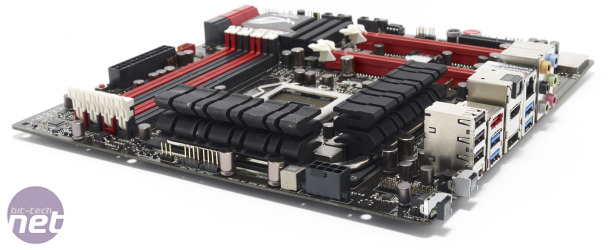
Asus Republic of Gamers Interview - Spreading the word
BT: Offering overclocking features is one thing, but teaching people to use them is often a challenge. What is ROG doing to educate new enthusiasts on how to best overclock their hardware?
Shamino: it is challenging to juggle so many tasks, so we rely on communicating with active and logically-minded enthusiasts, and they in turn help out others. We also have this habit of typing out long word documents, and leaving links on forums for people to read.
Andre: we do create overclocking guides for users, I think it’s quite helpful for them when trying to achieve higher results and records. Plus, they know all of us, and they always drop us mail if they face some challenges, and we do our best to answer and help them. And marketing team holds regular activities such as overclocking gatherings, competitions, seminars, and workshops, which all help people learn more.
Q9: Will we ever see a Mini-ITX ROG motherboard, or does the form factor limit the addition of high-end ROG features?
Shamino: this remains to be seen, but I’m sure our product management team is already considering this.
Andre: while the product management team are the right people to ask, we will never say no to innovation, or to offering greater benefit to users, no matter what the form factor is.
BT: Over the last few years, we’ve seen IDE finally disappear from new motherboards. What do you think will be the next port or connector to become redundant and disappear from future boards?
Shamino: not sure, but we do know for a fact that the back I/O is getting really overcrowded.
Andre: I would say USB 2.0.
BT: ROG has already extended from motherboards into graphics cards and headsets. What other products could lend themselves to the ROG treatment? Monitors? Cases? Toasters? We’d quite like to overclock our smartphones sometimes!
Shamino: We can’t say but hopefully you may be able to hear about new stuff soon – like we said, innovation is what we do.
Andre: Just stay tuned, we have a lot of surprises coming!
BT: What impact do you think the Thunderbolt port can have on motherboard design? Right now it’s mostly limited to storage, but with the ability to offer self-co
ntained plug and play graphics cards, the potential is enormous.
Andre: I would say it has many advantages, but possibly still some downside. The brilliant part is that it combines two channels for PCIe and DisplayPort, with super-speed connections and high quality visuals. I also like the daisy-chaining technology, which can connect 6 Thunderbolt devices with no performance loss according to Intel specs. On the other hand, the power support is quite limited, and it can only support small devices right now, like SSD, hard drives, and so on.
Thanks to Shamino, Andre and Bing for asking our questions. We'll be bringing you more ROG related goodness next week when we're out at Computex!

MSI MPG Velox 100R Chassis Review
October 14 2021 | 15:04









Want to comment? Please log in.